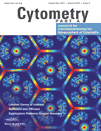
Experiment Overview
| Repository ID: | FR-FCM-ZZSH | Experiment name: | Axenic Cultures | MIFlowCyt score: | 30.00% |
| Primary researcher: | Peter Rubbens | PI/manager: | Peter Rubbens | Uploaded by: | Peter Rubbens |
| Experiment dates: | 2016-02-17 - 2016-02-18 | Dataset uploaded: | Jun 2016 | Last updated: | May 2018 |
| Keywords: | [flow cytometry] [microbiology] | Manuscripts: | [28122063] [29165907] [PMC5266259] |
|
|
| Organizations: |
Ghent University, Centre for Microbial Ecology and Technology, Gent, (Belgium)
|
||||
| Purpose: | FCM measurement of twenty bacterial axenic cultures in duplicate. These can be used to create bacterial communities in silico and analyze their properties. | ||||
| Conclusion: | Flow cytometry incorporates taxonomic diversity of microbial communities. In silico communities can provide a powerful strategy to employ and develop supervised machine learning methods. In addition, they can also be used to evaluate unsupervised machine learning algorithms. | ||||
| Comments: | Samples have been denoised using a digital gating strategy (following guidelines bye Hammes & Egli (2010) "Cytometric methods for measuring bacteria in water: advantages, pitfalls and applications"). Samples including the string 'HighQ' have been filtered using the automated package flowAI (https://www.bioconductor.org/packages/release/bioc/html/flowAI.html). Default values have been used, target channel is FL1 and changepoint detection penalty has been set to 150. | ||||
| Funding: | Grant sponsor: Ghent University (to P.R.), Grant number: BOFSTA2015000501 Grant sponsor: Ghent University (to R.P.), Grant number: BOFDOC2015000601 Grant sponsor: Belgian Nuclear Research Centre (SCK •CEN) (to R.P.) | ||||
| Quality control: | Prior to measurement, the performance of the Accuri C6 was evaluated by analyzing eight peak rainbow particles (Spherotech, Lake Forest, IL, USA). The performance check was passed if each bead population was located at its fixed position and displayed a coefficient of variation on its specific fluorescence channels of < 5%. | ||||
